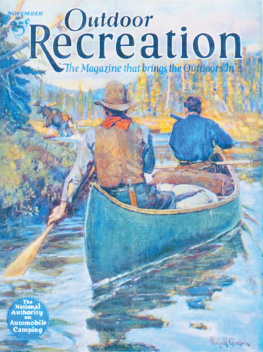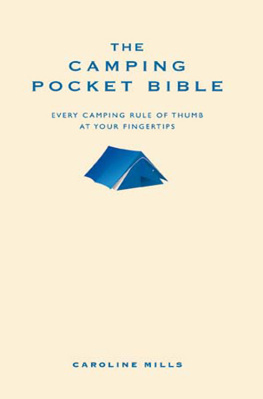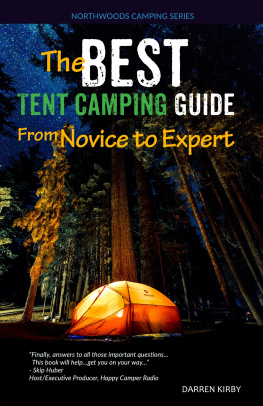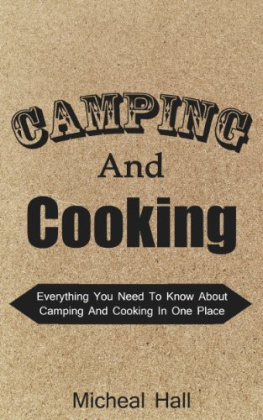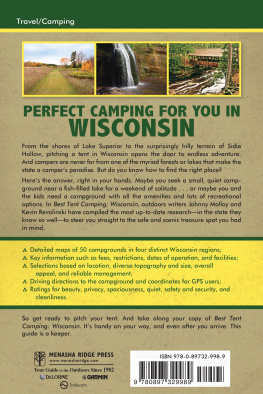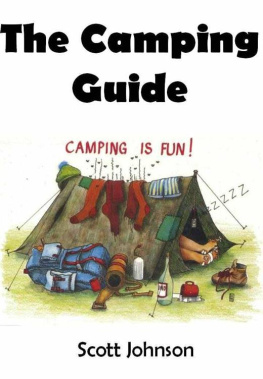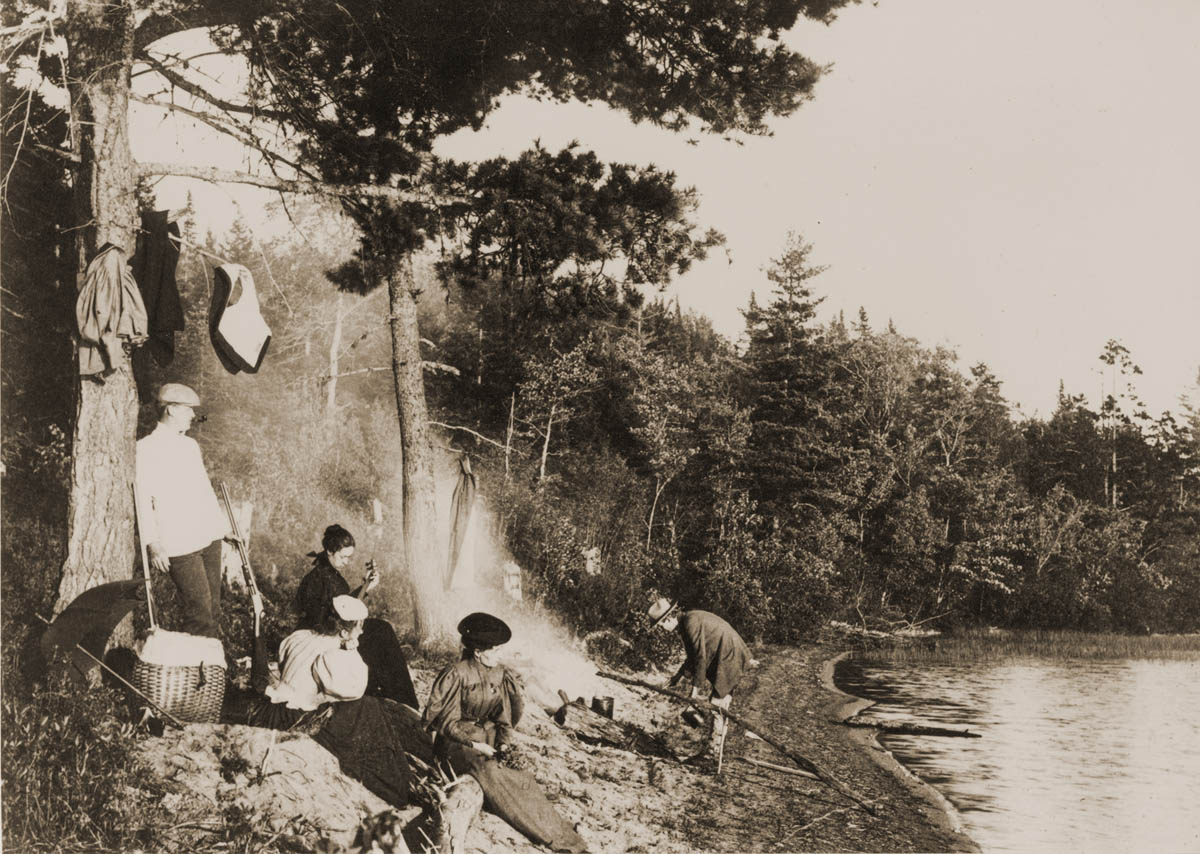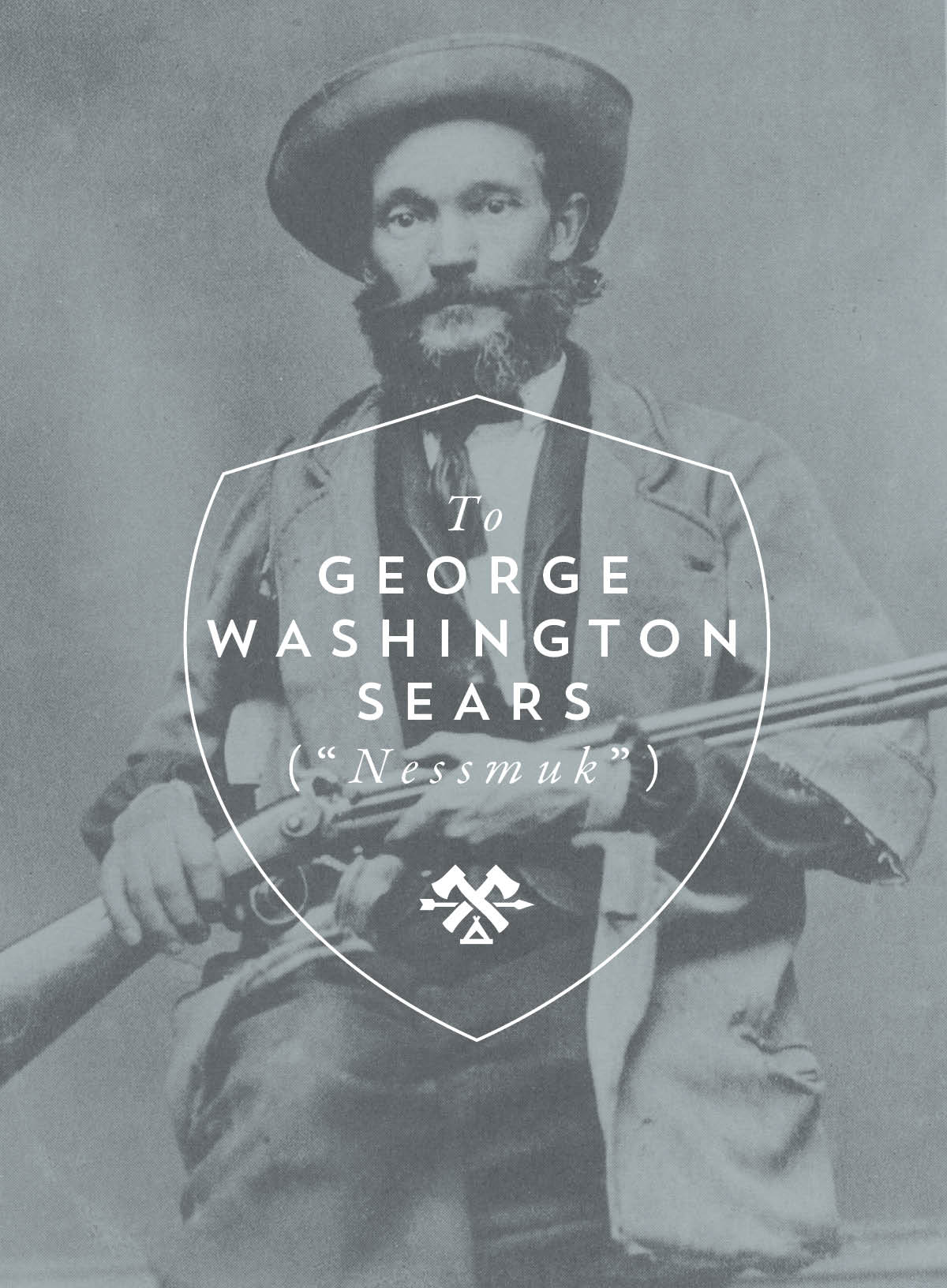Camping in the Old Style
David Wescott
Foreword and Contributions by Steven M. Watts

Camping in the Old Style
Digital Edition 1.0
Text 2015 David Wescott
Image credits are as listed throughout. Acorn Patrol Photographers include Jim Green, John Latham, Jennifer Mancke, Mike Powell, Tom Ray, Steven M. Watts, David Wescott, and Wayne Williams. Frontispiece image from Adirondack State Park.
All rights reserved. No part of this book may be reproduced by any means whatsoever without written permission from the publisher, except brief portions quoted for purpose of review.
Gibbs Smith
P.O. Box 667
Layton, Utah 84041
Orders: 1.800.835.4993
www.gibbs-smith.com
ISBN: 978-1-4236-3795-0
To my parents, who took me early to the woods.
I can still smell the ponderosa pines of the Sierra foothills, and my original army pup tent holds a place of honor in my workshop.
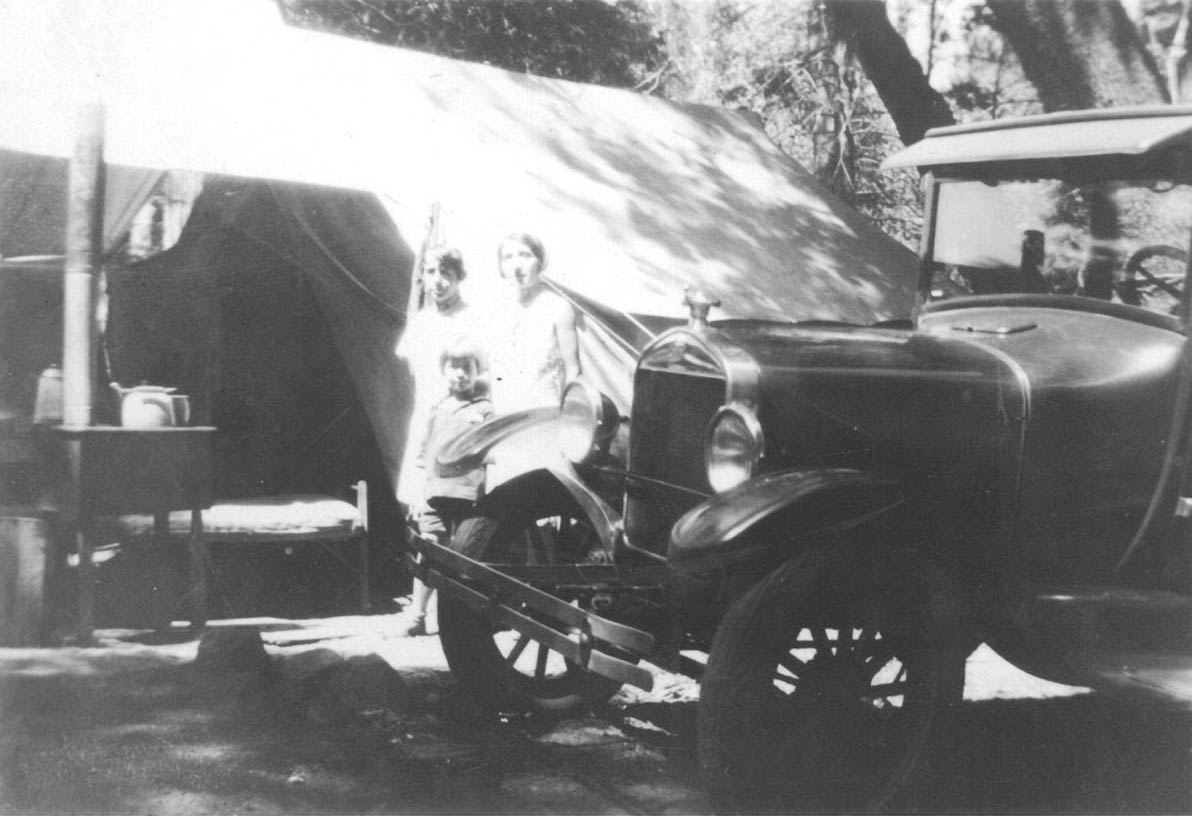
My mother (center) camping in Yosemite National Park with her mother (right) and aunt, 1929.
The Wescott family
To my wife and family, who have let Dad go out to playto practice and share with others the things Ive come to love, and to help me keep traditions alive.
DW
Acknowledgments
In her younger years my wife was a horse enthusiast, and even to this day the sight of a horse in full gallop brings tears to her eyes. The slow-motion replay of the same eventwith flared nostrils, muscles flexed and relaxed in a fluid motion, everything extended in full stridehas an even more profound impact on her. I must admit that even though horses make me sneeze, the sight of such perfectionan animal bred for speed, doing its thingraises goose bumps on my flesh and a lump in my throat.
I am by no means what one might call a sports enthusiast, a highbrow, or any other special interest fanatic. But when it comes to the well-played game, a fine work of art, a well-told story, or any talent, skill, or craft that is put on display by true masters of a discipline, I am not unlike anyone else, in that the quality of their performance based on the solid underpinnings of their art touches me.
And so it is with camping and woodcraft. Through a forty-year career of living in the outdoors, as well as twenty years of youth spent practicing for that career, I have tried to seek out only the best and brightest in the field to be mentors.
There is a long list of people that have helped shape my thinking on this great subject of camping, but at this writing only a few of the most influential come to mind: Rulon Skinner, who taught the first camping skills class I ever attended and gave me a B instead of an A on my final exam because I put down air instead of oxygen as one of the elements of the fire triad, teaching me that only precision and accuracy would be tolerated; Darry Wood, a true master craftsman and woodcrafter, who challenged me to comprehend that the beauty of woodcraft is that form and function are equal partners, and that when brought into balance through such mundane camp furnishings as guylines, axe handles, and knife edges, camp life becomes that much more pleasurable; Errett Callahan, a great friend from the South who showed me that thinking about the past and honoring that heritage is a task we all should pursue with gusto; Mors Kochanski, the North Woods wizard, master bushman, and teacher of bushcraft, who taught me that there is science behind the art of camping; Garrett and Alexandra Conover, who were the first contemporaries to write about the value of our camping traditions as more than quaint novelties to be thought about during bouts of nostalgia, but were viable and vital skills that deserved to be conserved and once again honed to perfection; my writing partner and campfire companion, Steve Watts, who got so excited about the first edition that we decided to embark on a teaching/learning adventure, which has now lasted more than ten years, to regain a mastery of these great old skills and introduce them to a new century of campers; Paul Petzoldt and Tap Tapley, who brought the ideas back to America that camping was something that, when mastered, could make us better people, and that those who fostered that thinking could actually make a living at teaching it; and Bill Mason, who merged the art of camping with the beauty of the outdoors on film and in print, and drew many of us toward a new view of our camping heritage and the values derived from Camping in the Old Style.
We recognize the generosity of the following organizations for the use of their images:
Abercrombie & Fitch Co.
Acorn Patrol
Adirondack State Park
C.C. Filson Co.
Camp-Fire Club of America
Duluth Pack
Madison County (Idaho) Historical Society
The Mountain Heritage Center
Yellowstone National Park
Yosemite National Park
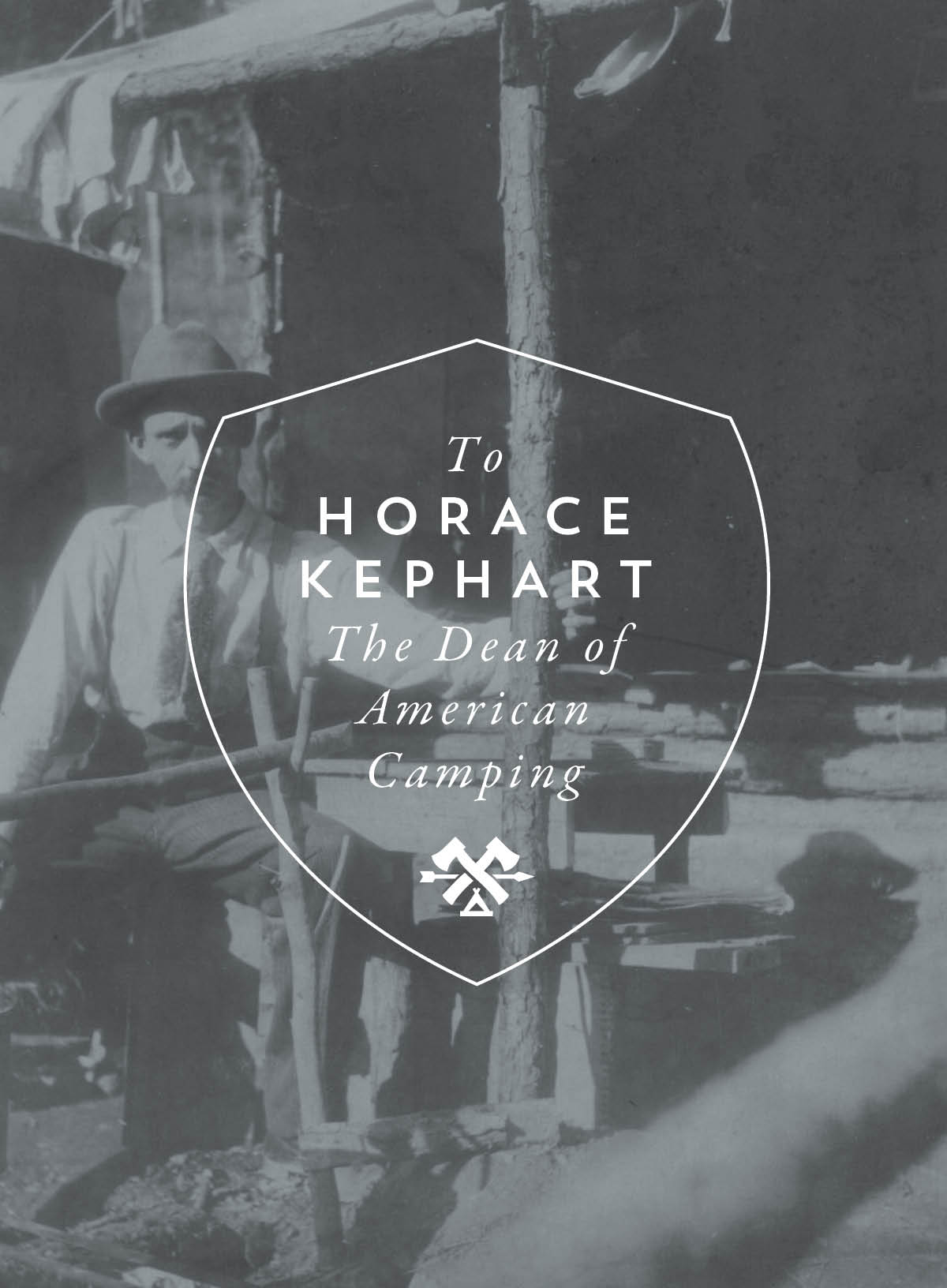
The Mountain Heritage Center
I cannot hope to give you the Forest. But perhaps a word or a sentence, an incident, an impression, may quicken your imagination, so that through no conscious direction of my own the wonder of the Forest may fill you, as the mere sight of a conch-shell will sometimes fill you with the wonder of the sea. (Stewart Edward White, The Forest , 1903)
The publication of Camping in the Old Style in 2000 marked the beginning of the classic camping revival in America. It introduced a whole new generation of readers to a body of literature and a cache of outdoor living skills from an earlier time. For many, it renewed an interest that had been rendered dormant by time and neglect. What was old is new again.
Camping in the Old Style became a guidebook for a serious group of enthusiasts seeking to recapture through practice the woods wisdom of the Golden Age of Camping.
Classic camping skills courses, workshops, demonstration camps, and gatherings grew from its inspiration. Some readers elected to pick and choose from its offerings, adding a new dimension to their outdoor experiences, while others became deeply immersed in the time period, creating fully researched projects dedicated to experiential learning and educational re-encampments designed to share the practical pleasures of camping and woodcraft with the public at large.
This instinct for a free life in the open is as natural and wholesome as the gratification of hunger and thirst and love. It is Natures recall to the simple mode of existence that she intended us for. (Horace Kephart, Camping and Woodcraft, 1917)
Now, with this new, expanded, and revised edition, David Wescott takes us further down the trail into the rich territory of old-style camping. There could be no better guide in the lead. Wescott has devoted his whole life to the practice and teaching of outdoor living skills, from the oldest of Stone Age technologies to the most contemporary practices of todayand everything in between. He is recognized as the leader of the traditional revival movement and the countrys foremost authority on the history of camping.

